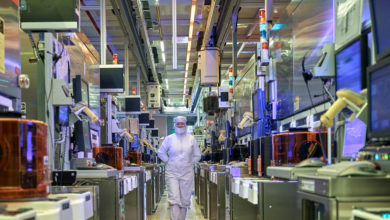Global warming is the most urgent environmental challenge of our time. The
raging debate has yielded numerous international summits among the world’s
leading economies, but little has been achieved in terms of actually stopping
or reversing the escalating threat.
|
|
U.S. officials have consistently dug in their heels and stalled progress by
demanding that countries with underdeveloped economies bear a greater share of
the burden of emissions reduction. And China is their favorite scapegoat.
Yet China has invested billions of dollars to increase clean energy in
recent years. Governmental policies and incentives encouraging energy efficiency
have enabled the country to become one of the world’s leaders in clean-energy
industries.
According to a recent report in the Seattle Times, “Overall clean-technology
investments in China reached $34 billion last year, more than any other country
and almost double the U.S. investment of $18 billion.” Initiatives also “include
a cap on carbon, aggressive fuel-efficiency targets and a plan for $700 billion
in investments over the next 10 years.”
This year alone, China has received more financing for clean energy than
Europe and the United States combined. In the second quarter, funding for
clean-energy technologies such as wind turbines, solar panels and low-carbon
technology rose 72 percent to total $11.5 billion, compared with U.S.
investment of $4.9 billion.
Kunshan, a city located an hour outside Shanghai, has become a leading
center in the development of solar power, wind power and biotechnology. A goal
has been set there to produce 400 million to 500 million solar panels.
Taiwanese manufacturer Motech Industries started mass production of solar
cells in Kunshan just two years ago, but already demand is exceeding capacity.
A company demonstration center displays “miniature homes of the future, with
green roofs and solar-powered lights, new types of small wind turbines and
ultrathin solar-cell material that can be used in roofing or curtains. They
even have a model handbag designed to tap sunlight to charge cellphones.”
(Seattle Times, Aug. 8)
This year’s Shanghai Expo was the largest of its kind in history, drawing
more than 30 million visitors. It featured exhibits including electric cars,
solar and wind power, and even power derived from algae. One of the electric
cars absorbs carbon dioxide while simultaneously emitting oxygen.
In addition, utilities are being required to sell renewable energy to
consumers at discounted rates. There will be a 50 percent subsidization of the
investment cost for solar-power systems; and a 20 percent reduction in energy
intensity coming on the heels of a 14.4 percent reduction in 2009. Energy
intensity is the energy consumption per unit of economic output. (Associated
Press, Aug. 9)
Leading polluters scapegoat China
Despite these remarkable Chinese achievements, U.S. government officials
have continued to stall progress in climate change talks by demanding that
developing economies—particularly China—bear a larger share of the burden of
emissions reduction. U.S. pundits and politicians see China’s increasingly
rapid rate of development as a threat to U.S. global economic dominance.
China is developing at an impressive pace. Its economy grew at rates
of 11.9 percent and 10.3 percent in the first and second quarters,
respectively. The country is fifth in annual
percentage increase in industrial production, which includes manufacturing,
mining and construction. In terms of total spending on fixed assets, such as
factories, homes and inventories of raw materials, which provide the basis for
future production, China ranks third. In contrast, the United States comes in
at number 116 and 145, respectively, for the same indices. (CIA World
Factbook, 2009)
China has become the world’s largest energy consumer and carbon emitter—but one in every five people on the planet live in China. Its
population is well over 1.3 billion people; the U.S.
population is just about 310 million people, far less than one quarter the
population of China. As a result, China is still well behind much of the
world in per capita energy consumption and emissions.
In fact, one would have to combine all historically dominant colonial
powers—the U.S., U.K., Netherlands, Portugal, Spain, France, Germany, Belgium,
Japan and Australia—and some of the dominant contemporary U.S. puppet
regimes—Israel, Colombia, Saudi Arabia, South Korea, the Philippines and
Indonesia—to even come close, yet still shy, of the total population of China.
The key to China’s clean-energy
policies
The key to understanding the differences in development of clean-energy
technologies between the U.S. and China is the continued presence of the
Chinese Communist Party at the head of the state.
It is precisely because China’s energy sector is largely state-owned that
the Chinese government is able to implement clean-energy policies.
In the United States, there is no centralized energy policy. Fossil fuel
energy interests, as well as the emerging clean-energy industry, are controlled
by private capital. The amount of resources invested into these industries, and
the resulting dominance of one form of energy production over another, are
entirely determined by how much profit they yield and their strategic value for
U.S. capitalists.
Through decades of imperialist war, CIA-sponsored coups and the funding of
loyal client regimes, the United States has secured control over or access to
some of the world’s richest oil fields. This has yielded mega-profits for
energy companies and a strategic advantage over other leading economies.
A sector of the U.S. capitalist class is becoming increasingly interested in
the investment opportunities offered by the clean-energy industry. Further, some
worry about U.S. dependence on oil. But even with all of that taken into
account, the influence and power of oil interests, as well as the
military-industrial complex interests to which they are inextricably linked, remain
far superior.
As a result, while U.S. politicians and investors may tout clean-energy
technology as the future opportunity for growth in industry, little action has
been taken to promote it.
The U.S. Senate, for instance, recently failed to pass even problematic
energy legislation to cap carbon emissions by utilities and set new
renewable-energy standards. Opponents, likely all recipients of funding from
the fossil fuels industries, claimed it would increase energy prices and
restrict economic growth.
The contradictions in China
For the past three decades, increasing sectors of China’s economy have been
transferred to capitalist forms of property. Private enterprise has developed,
foreign corporations have gained access to the country’s economy and
collectivized agriculture has been dismantled. However, in spite of the many
capitalist reforms, socialism has not been fully eradicated. Public ownership
of the means of production and central economic planning still exist, even if
to a lesser degree than in the past.
Socialist and capitalist development are in direct contradiction. Central
planning has allowed remarkable achievements in clean energy, but because of capitalist-oriented
policies, these achievements have at times come at a price for China’s working
class.
For instance, to reduce industrial waste, the Chinese government recently
called for the closure of 2,087 factories with poor energy efficiency by the
end of September, including 762 cement factories, 279 paper mills, 175 steel
mills, 192 coking plants and an unspecified number of aluminum mills. Truly
socialist planning would include guarantees to the workers in these industries,
including the right to a new job and any necessary retraining, but capitalist
policies of economic development have eradicated many of the protections
Chinese workers once enjoyed.
China is attacked day in and day out in the U.S. corporate media, not
because it has strayed from socialist principles, but because it has not fully
adopted capitalist principles. A working-class critique, on the other hand,
recognizes China’s remarkable achievements and defends its right to pursue
economic development free from U.S. interference, without losing sight of the
impact of capitalist development on the working class.
The remaining elements of socialist planning made it possible to prioritize
clean energy in China. Without the active involvement of the Chinese Communist
Party, the needs of capital would have taken precedence over all other
considerations. Only through socialism—the eradication of the profit motive and
private corporate authority over the economy—can rational decisions be made to
restore and protect the environment.






